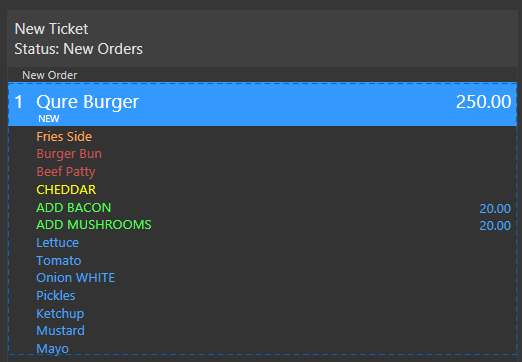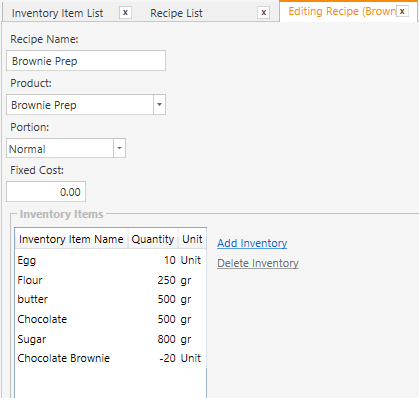The scenario is two-fold. It is not just about tracking Inventory, it also about tracking Cost and Profit Rate. SambaPOS does both of these things already. However, consider this:
Master Product: Burger
Ingredient Products: Patty, Bun, Cheese, Veggies, Condiments, etc.
Sub-ingredient Product Inventory for Patty: Ground Beef, Bread, Eggs, etc.
We cannot track the Inventory of the Patty itself (nor the Burger as a whole); rather, we can only track the Ingredients (Ground Beef, Bread, Eggs, Buns, Cheese, Lettuce, etc)
The Burger Master Product has a null Profit Rate, because its Recipe contains 0 Inventory Items. Instead, the Inventory Items are mapped to Order Tags. So now we need to look at the Profit Rate of each of the Ingredient Inventory Items (Order Tags) - again, Patty, Bun, Cheese, etc.
Untouched Inventory:
Sell 1 Burger:

Inventory Consumption:
Looking at the above, we see Ingredients being consumed. But we don’t see the Master Product (Burger), nor the Patty being consumed - only the Patty Ingredients, and other Order Tags (Bun, Cheese, etc). The reason we don’t see Patty consumed is because it is not an Inventory Item - it only has a Recipe composed of other Inventory Items (Ground Beef, Eggs, etc)
Now let’s look at Cost and Profit:
The above Cost analysis looks completely whacked. It shows the correct quantity of Products being sold, and their presumed Cost. Except for the Master Product (Burger) - it has no Cost, so no Profit. And the Patty, Buns, Cheese, etc, while they have a Cost, they have no Price, so the Profit Rate is negative. This analysis (Profit Rate) is somewhat useless in the current incarnation.
Maybe I set it up incorrectly, but I would have assumed that the Cost of the Burger would have been the Cost of the Order Tags combined, but this is clearly not the case. And to be honest, I don’t really care about the Profit on the Bun, Cheese, Bacon, etc… I just want the Profit on the Burger Master Product. Of course, I can calculate this…
4.65 + 8.00 + 3.75 + 106.93 = 123.33
290.00 / 123.33 = 2.35
But after having sold 30 Burgers with varying Order Tags, the manual calculation becomes tedious to say the least, not to mention - I have no idea if the Cheese (for example) was used on a Burger, or a Hot Dog. In fact, the Bun may have been used for a Pulled Pork Sandwich as well…
But I digress… I have led this discussion astray from the original Topic of building prepped Products to use as Inventory. Sorry for the hijack.





